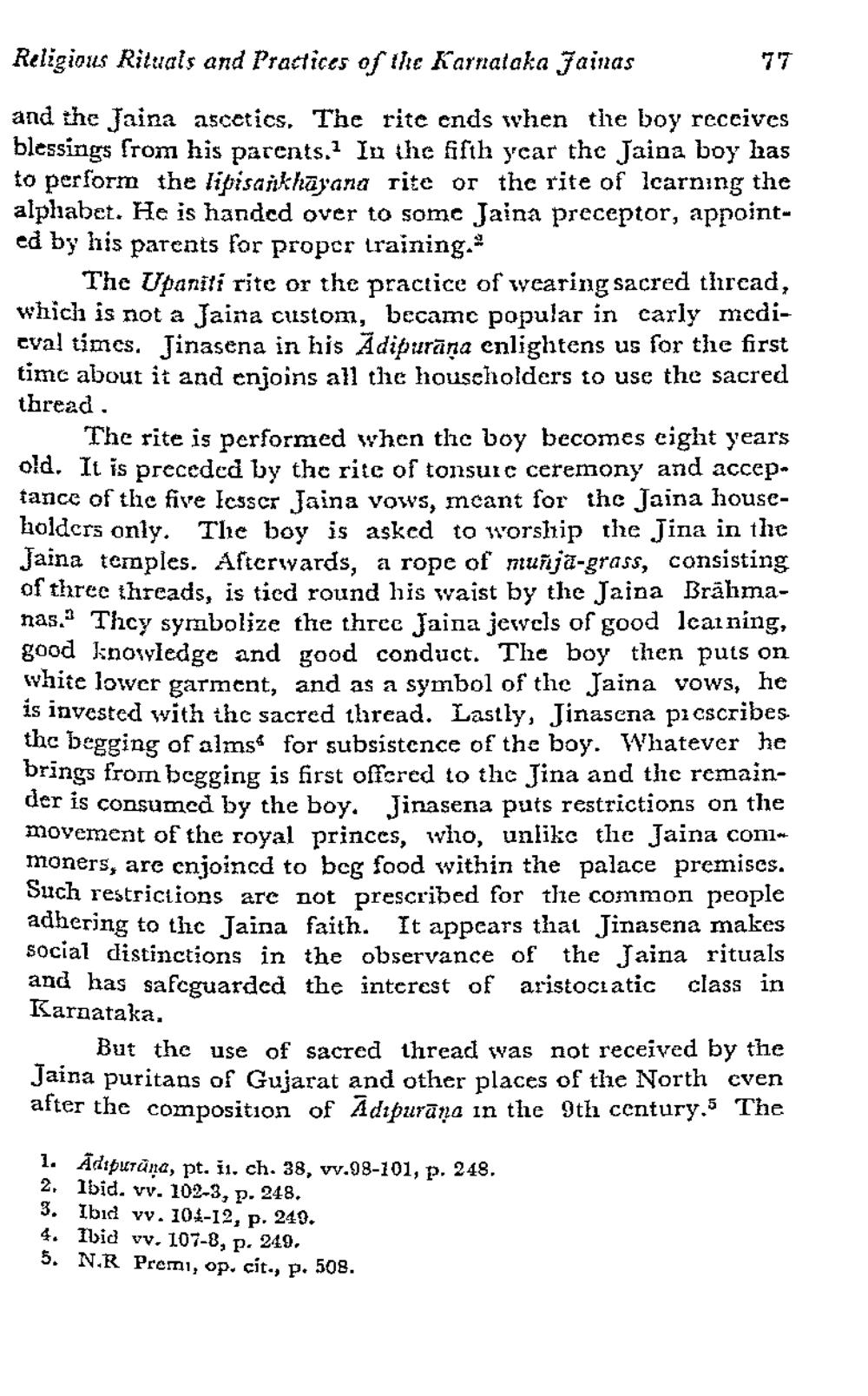________________
Religious Rituals and Practices of the Karnataka Jainas
and the Jaina ascetics, The rite ends when the boy receives blessings from his parents. In the fifth year the Jaina boy has to perform the lipisajikhayana rite or the rite of Icarning the alphabet. He is handed over to some Jaina preceptor, appointed by his parents for proper training.
The Upaniti rite or the practice of wearing sacred thread, which is not a Jaina custom, became popular in carly mcdieval times. Jinasena in his Adipurāna enlightens us for the first timc about it and enjoins all the householders to use the sacred thread.
The rite is performed when the boy becomes cight years old. It is preceded by the rite of tonsurc ceremony and acceptance of the five lesser Jaina vows, mcant for thc Jaina householders only. The boy is asked to worship the Jina in the Jaina temples. Afterwards, a rope of muñja-grass, consisting of three threads, is tied round his waist by the Jaina Brälmanas." Thcy symbolize the three Jaina jewels of good lcaining, good knowledge and good conduct. The boy then puts on white lower garment, and as a symbol of the Jaina vows, he is invested with the sacred thread. Lastly, Jinasena picscribes the begging of alms for subsistence of the boy. Whatever he brings from begging is first offered to the Jina and the remainder is consumed by the boy. Jinasena puts restrictions on the movement of the royal princes, who, unlikc thc Jaina conimoners, are enjoined to beg food within the palace premises. Such restrictions are not prescribed for the common people adhering to the Jaina faith. It appears that Jinasena makes social distinctions in the observance of the Jaina rituals and has safeguarded the interest of aristociatic class in Karnataka.
But the use of sacred thread was not received by the Jaina puritans of Gujarat and other places of the North cven after the composition of Adipurāna in the 9th century. The
1. Adiputāna, pt. i1. ch. 38, vv.98-101, p. 248. 2. Ibid. vv. 102-3, p. 248. 3. Ibidvy. 104-12, p. 249. 4. Ibid vv. 107-8, p. 249. 5. N.R Premi, op. cit., p. 508.




